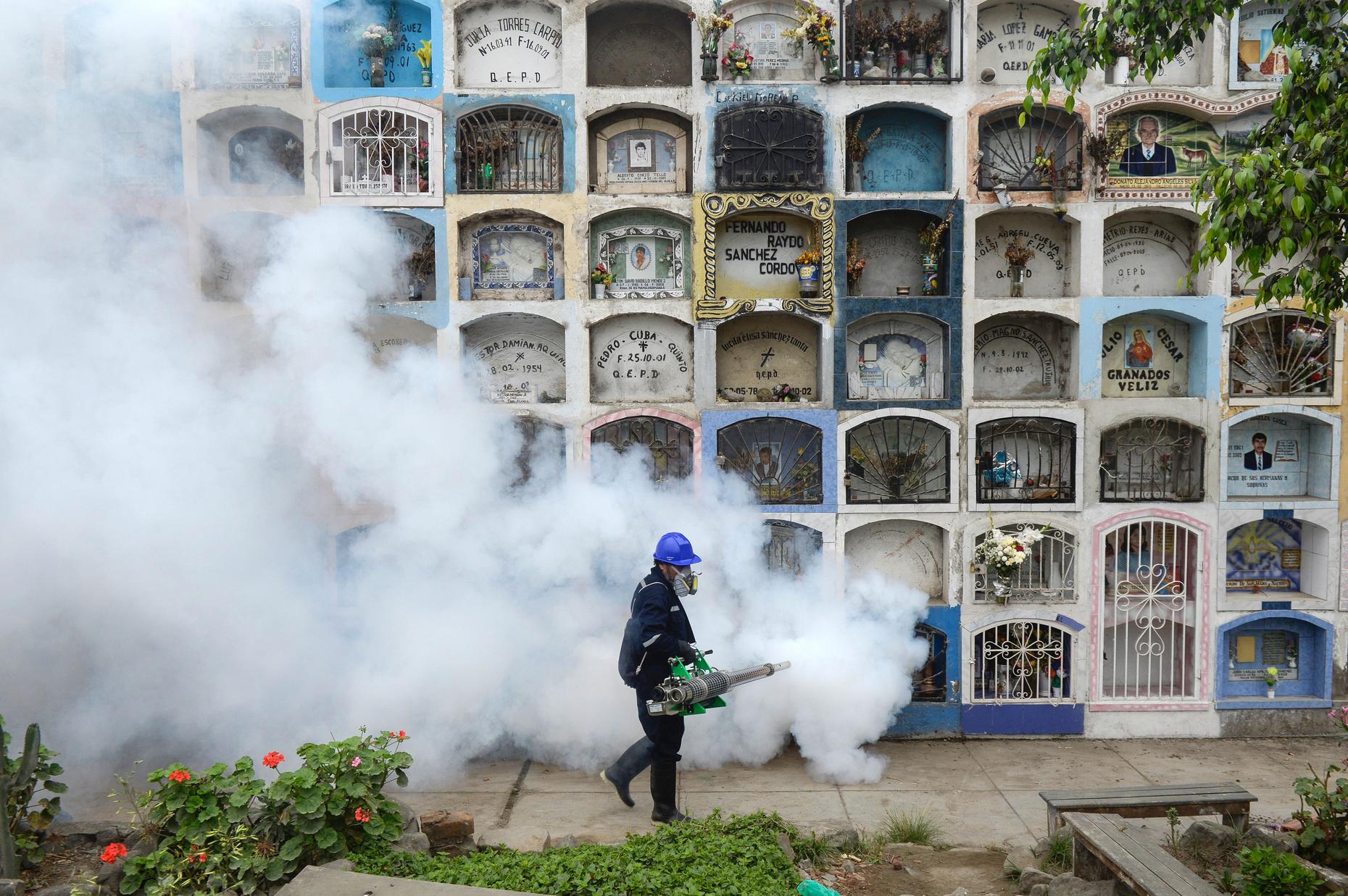Under what circumstances and conditions does a mosquito-born disease initiate and latch on in an affected region? It has to be brought to the region from somewhere. This is often the case with infectious diseases, and they spread like wildfire in new areas where the local population does not have the immunity, drugs or infrastructure in place to cope with it.
| Workers in Rio de Janeiro, Brazil ready to begin spraying insecticide to prevent the spread of Aedes aegypti mosquito, which carries the Zika virus. From https://theconversation.com/explainer-where-did-zika-virus-come- from-and-why-is-it-a-problem-in-brazil-53425 |
Zika, for example, became a crisis in Brazil in early 2015. The first cases are thought to have come to country through traveling individuals. Genetic analysis of the strains from cases in Brazil were found to be similar to those from outbreaks in Pacific Island nations. One possibility is that an individual carrying it came from Chile, as exposure to the disease was found in a returning individual on vacation from Easter Island. Another possibility is that the virus was introduced in Rio de Janeiro following a canoe race, in which competitors from Pacific Islands were present.

In Brazil, where Zika is taking hold, these factors describe the affected regions perfectly. They lay a solid foundation on which diseases can build a rampant and lasting presence. For regions of the world where malaria is endemic, the presence and alignment of the layers is glaringly obvious. This raises concern for parts of the world that may be extremely susceptible to the spread of current diseases or to the introduction of new diseases that could take over in a short span of time. Scientists are looking for trends in areas hit the hardest by mosquito-borne diseases in order to create solutions to existing problems and hopefully prevent crisis in the future.

In Brazil, where Zika is taking hold, these factors describe the affected regions perfectly. They lay a solid foundation on which diseases can build a rampant and lasting presence. For regions of the world where malaria is endemic, the presence and alignment of the layers is glaringly obvious. This raises concern for parts of the world that may be extremely susceptible to the spread of current diseases or to the introduction of new diseases that could take over in a short span of time. Scientists are looking for trends in areas hit the hardest by mosquito-borne diseases in order to create solutions to existing problems and hopefully prevent crisis in the future.
The following excerpt is from an article detailing the multi-level array of factors that contribute to the ideal environment in which mosquito-borne diseases like Zika thrive. For the whole article by Dr. Vittor from the University of Florida School of Medicine, click here.
Increasing urbanization and poverty create a fertile environment for the mosquitoes that spread dengue by creating ample breeding sites. In addition, climate change may raise thetemperature and/or humidity in areas that previously have been below the threshold required for the mosquitoes to thrive.
The second layer is the introduction of the mosquito vector. Aedes aegypti and Aedes albopictus have expanded their geographic range in the past few decades. Urbanization, changing climate, air travel and transportation, and waxing and waning control efforts that are at the mercy of economic and political factors have led to these mosquitoes spreading to new areas and coming back in areas where they had previously been eradicated.
The third layer, susceptible hosts, is critical as well. For instance, chikungunya virus has a tendency to infect very large portions of a population when it first invades an area. But once it blows through a small island, the virus may vanish because there are very few susceptible hosts remaining.
Since Zika is new to the Americas, there is a large population of susceptible hosts who haven’t previously been exposed. In a large country, Brazil for instance, the virus can continue circulating without running out of susceptible hosts for a long time.
The fourth layer is the introduction of the virus. It can be very difficult to pinpoint exactly when a virus is introduced in a particular setting. However, studies have associated increasing air travel with the spread of certain viruses such as dengue.
When these multiple factors are in alignment, it creates the conditions needed for an outbreak to start.
Putting The Layers Together
Scientists are studying the role of these “layers” as they relate to the outbreak of yet another mosquito-borne virus, Madariaga virus (formerly known as Central/South American eastern equine encephalitis virus), which has caused numerous cases of encephalitis in the Darien jungle region of Panama.
There, they are examining the association between deforestation, mosquito vector factors, and the susceptibility of migrants compared to indigenous people in the affected area.
The hope is to understand how to predict and therefore prevent outbreaks of diseases originating in far-flung regions of the ever-more connected world in which we live.
No comments:
Post a Comment